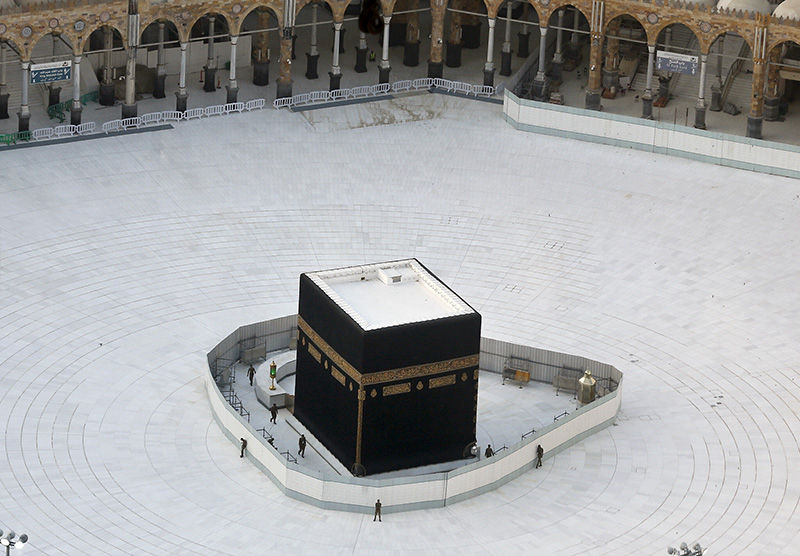

Saudi Arabia said on Monday that a small number of residents would be allowed to perform Hajj this year.
The Saudi Ministry of Hajj and Umrah said “very limited numbers of people from various nationalities based in Saudi would be eligible to perform the pilgrimage.
"The Kingdom's decision stems from the preventive and precautionary measures taken to contain the spread of the pandemic and to keep all humans protected and safe from its risks and in accordance with the teachings of Islam in preserving the lives," the HAO said in a statement.
It came as the authorities announced a further 378 cases of coronavirus, taking the number of infections in the country to 45,303. Officials also said an additional 631 patients had recovered from the virus, while one patient had died.
Worldwide cases passed 9 million late on Monday, according to the Johns Hopkins University tracker. Overall deaths stood at 469,122, while recoveries passed 4.4 million.
The Hajj is considered the world’s largest religious gathering, which brought almost 2.5 million pilgrims together in Makkah in 2019.
The Saudi government assigns a quota to each country to prevent overcrowding.
The pilgrimage is followed by Eid Al Adha, which is expected to fall on July 31 this year. Known as the “festival of sacrifice,” it is one of the biggest celebrations in the Islamic calendar.
What is Hajj?
The world's largest annual pilgrimage, Hajj requires the faithful to repeat a set of rituals first performed by the Prophet Mohammed centuries ago.
The event is a deeply spiritual experience for Muslims, and one every believer aspires to take part in at some point in their life, if they are able to do so.
Those who are unable to perform the pilgrimage for financial or health reasons are exempt. If they can afford it, Muslims can have someone perform Hajj on their behalf, with Sharia advising they fund someone who would otherwise be unable to attend.
The history of Hajj
Though Hajj has been performed in its current form for more than 1,300 years, some of its elements go back to the time of the Prophet Ibrahim in 1813 BC.
It is said God ordered the Prophet Ibrahim to leave his wife, Hagar, and son, Ismail, alone in the desert of ancient Makkah.
Hagar, desperately searching for water for Ismail, ran between two small hills, Al Safa and Al Marwa, seven times.
When she returned to her son, she saw him scratching at the ground and it is said a miracle from God caused a spring to well up beneath them.
Today, pilgrims pace between these two mountains as part of the rituals of Hajj in remembrance of that miracle. The site is now the Well of Zamzam.
Even the Kaaba is tied to the Prophet Ibrahim, who built it with the help of his son under orders from God, who told him to invite people to make pilgrimage there.
It is said the black stone used to build the Kaaba was supplied by the angel Gabriel, who brought it from heaven.
Some time before Islam was introduced in 610 AD, the Kaaba became a site for pagan worship.
Twenty years later, the Prophet Mohammed led his followers from Makkah to Madinah where they destroyed the pagan idols.
The Prophet Mohammed performed his first and only Hajj, with a large number of followers, in 632.
Those accompanying the Prophet Mohammed observed his every move and these steps are performed in the same sequence today.
SHARE THIS PAGE!